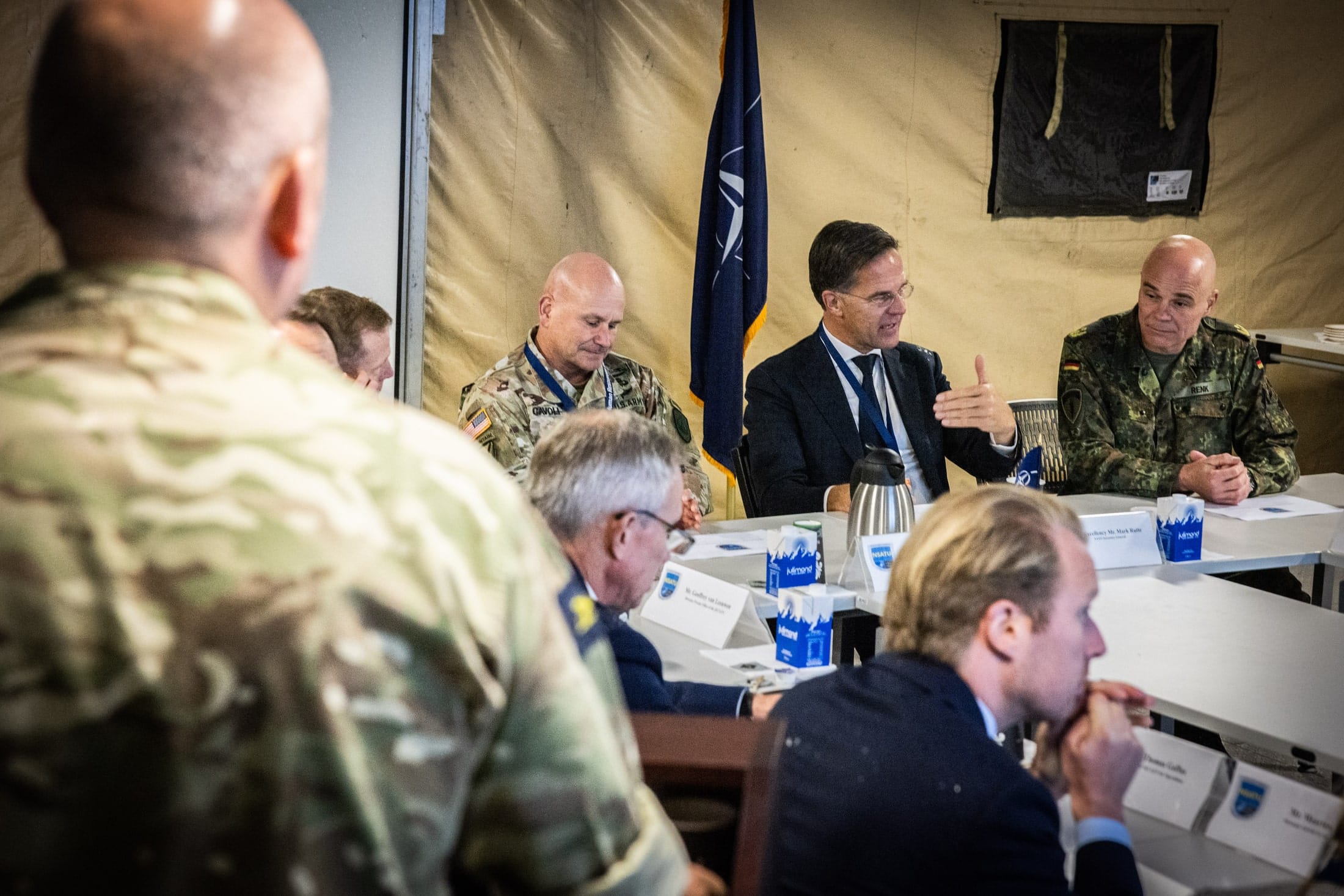NATO and the Trump Challenge: Navigating the Alliance's Priorities in a Shifting Climate and Security Landscape

NATO Secretary General Mark Rutte during an official visit to Clay Barracks in Wiesbaden, Germany in 2024. Photo: NATO
The potential impact of a second Trump administration on NATO has attracted substantial analysis, with some experts speculating that Trump’s demands — though as yet undefined — could threaten the alliance in its current format. While a complete US withdrawal seems unlikely, a second Trump administration would almost certainly push for structural changes by advocating for a multi-tiered framework where benefits align with contributions and encouraging European members to take a more active role in their own defence; a prospect that has been dubbed as the starting process of Europe’s rebirth.
A Trump administration would also likely attempt to reorient NATO’s priorities which presents an understated but consequential challenge: the potential conflict between Trump’s domestic climate policies and NATO’s commitment to addressing climate change. While Trump’s specific climate agenda remains unconfirmed, his first-term policies and campaign rhetoric hint at a probable course. Regardless of specifics, his climate-skeptic approach sharply contrasts with NATO’s own ambitious climate goals which include consistent decarbonisation and, ultimately, carbon neutrality by 2050. The real challenge for NATO, therefore, lies in preparing to constructively engage with an American administration that may be resistant to its climate-oriented goals rather than in averting a total US disengagement.
How a Second Trump Presidency Might Challenge NATO
NATO’s climate adaptation strategy rests on two main objectives: understanding the rapid onset of climate-related crises and developing the resources necessary to address the root causes of climate change. In this way, the alliance aims to address climate change both strategically and operationally. Since NATO and its adversaries are yet to master the art of effective operation in extreme environmental conditions, the race to adapt constitutes, in and by itself, a major strategic endeavour . A second Trump administration, however, could undermine the alliance’s prospect in this unfolding race by exacerbating existing divisions within NATO regarding the importance of climate change.
A number of NATO states tend to view climate change as a distant threat. Some officials dismiss its relevance to NATO’s daily operations all together while others fear that prioritising climate issues could come at the expense of operational efficiency. Germany and Turkey are two examples neither of whom have fully incorporated climate change into their military planning and/or security assessments. Thus, Trump’s presidency would not necessarily disrupt a perfectly unified stance within NATO but instead could deepen existing divisions. The anticipated US withdrawal from the Paris Agreement and subsequent push for increased fossil fuel production, in other words, could potentially discourage other NATO members from pursuing costly emissions reductions.
Strategically, a divergence on climate policy would allow adversaries to gain a leadership role in climate mitigation efforts and use it to turbocharge their geopolitical reach. In the Arctic, for example, climate change is reshaping security dynamics. NATO’s ability to respond effectively to new challenges in the Arctic will be hampered if the US deprioritises climate adaptation just as China, in ever closer cooperation with Russia, is increasing its regional presence and scientific undertaking in the region. Equally consequential, NATO risks losing a degree of support amongst environmentally conscious publics if key members fail to commit to carbon reduction targets.
There is also the potential that the second Trump administration might seek to deprioritise funding for NATO’s climate-related projects and partnerships including initiatives under NATO’s Science for Peace and Security Programme which finances climate resilience and research efforts in partner countries. Not only such initiatives present an effective public diplomacy tool for the alliance but they have also helped turn NATO’s climate goals into action while simultaneously facilitating increased understanding and collaboration between NATO and its partner states.
Conclusion
Within NATO, there are varying opinions on prioritising climate change and other security threats, and the consensus-based nature of the alliance can hinder rapid progress on emerging issues. Some NATO members perceive climate change as distinct from traditional security concerns, and hence they tend to designate it as a second order priority. This perception is misguided best evident in the fact that closer Russian and Chinese cooperation in the Arctic, while not brought about by the climate change, is partially facilitated by the effects of it. Were it not for the impact of the climate change and the subsequent opening of the Arctic sea-lanes, for instance, there would have been less incentive for Beijing and Moscow to forge a partnership.
As NATO implements its climate adaptation roadmap and strive to become “the leading international organisation for understanding and adapting to security impacts of climate change”, it will need to manage the unequal impacts of climate change on different allies and the potential demands for resources from more climate-vulnerable partners. It is still unclear how, or if, Article 5 would apply in cases of major environmental crisis/emergencies, or how Trump’s envisioned multi-tier alliance would handle such threats. As such, there is an urgent need for the alliance’s leadership to articulate its own initiatives and proposal on these issues before the inauguration so it can shape the debates and discussions when they occur instead of simply reacting to whatever policy proposal the Trump Administration ends up coming up with. In doing so, it is worth keeping in mind Mr. Trump’s unconventional style of diplomacy; that is to say, NATO’s secretary general might have a higher chance of success if he focuses more on cultivating positive personal relations with President Trump and less on bureaucratic and institutional engagements.